
In 1923, Pablo Picasso told his peer, the Mexican gallery owner Marius de Zayas, that “art is a lie”—but one that “makes us realize truth, at least the truth that is given us to understand.” Artists intuitively engage—in paint, clay, prints, film—with the strangeness of life. Their creations can differ wildly from our expectations and outlook; they frequently inspire emotion by surprising us or, as Picasso believed, by manipulating our perception.
Those inexplicable feelings make many people curious. Viewers are driven to understand who makes art and why, seeking out behind-the-scenes details about well-loved artworks. Memoirs, manifestos, and aesthetic histories offer insights into what can otherwise be unspoken and untranslatable, including the mystery involved in the making of a piece.
The six titles presented below explore different facets of visual art: the materials, the concepts, the people. Together, they affirm that, as Picasso said a century ago, creative work reveals to us what is hidden; it is fundamental to how we process the world.
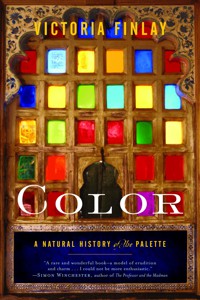
Color, by Victoria Finlay
Many accounts of art history begin with how humans first acquired the materials that create colors. In her book, Finlay unearths the background of familiar hues. The results reveal how political a painter’s palette can be. Ochre, the by-product of clay and ferric oxide, brings Finlay to Australia and its Aboriginal people, who have used it for thousands of years in ceremonial practices. Red has a bloody background: Millions of cochineal beetles have been killed to produce the lucrative pigment carmine, and Spain violently invaded Mexico, where it was traditionally extracted. Most macabre of all is the troubling past of brown. Finlay focuses on “mummy brown,” the shade extracted from crushed Egyptian mummies and allegedly used in Romantic artworks such as Eugène Delacroix’s Liberty Leading the People. Finlay’s investigation adds depth to our interpretation of the history of art: Colors don’t simply flow out of a tube. Beyond their function and appeal, they carry memories—sometimes violent ones.
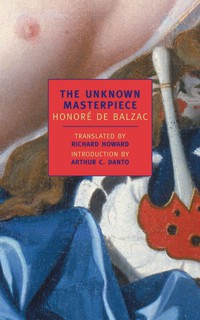
The Unknown Masterpiece, by Honoré de Balzac (translated by Richard Howard)
Balzac’s novella, which influenced modernists such as Paul Cézanne and Picasso, is about the sacrifices that artists are willing to make for their art, and whether or not universal beauty exists. In 17th-century Paris, the lives of three painters briefly collide: A young Nicolas Poussin visits the studio of a man he admires, François Porbus. Frenhofer, an old and respected acquaintance of Porbus, is also there. Together, they consider what their profession means and contemplate techniques. Frenhofer shares his struggle to create the perfect painting. His goal is to make the art itself disappear—to feel as if “the air is so real you can no longer distinguish it from the air around yourselves.” But when Frenhofer eventually displays his masterpiece, Balzac exposes the gap between a creator’s hopes and an audience’s reception. Most strikingly, the scene challenges the assumptions that all art should be made for public consumption and that a work is ever finished. An artist may work their entire life just to accept that perfection is an illusion.
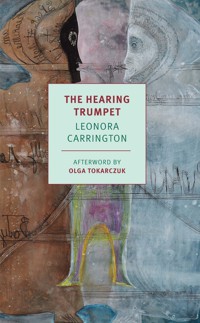
The Hearing Trumpet, by Leonora Carrington
Carrington, a significant figure of the 1930s surrealist-art movement in Mexico, explored dreamlike landscapes, uncanny creatures, and bizarre encounters in her paintings, pushing against the “reign of logic” that the French writer André Breton criticized in his influential 1924 Surrealist Manifesto. In her novel, events are similarly illogical—a murder, the legacy of a medieval abbess, and various occult quests add up to a self-affirming exploration of madness and fragile sanity. Carrington’s protagonist, Marian Leatherby, a 92-year-old foreigner living in Mexico, is unexpectedly gifted an ear trumpet by her good friend Carmella. While using the accessory, she overhears that her family wants to send her away to a private institution for seniors; she’s moved to this unfamiliar, cultish space and must adapt to all-new daily rituals. Meanwhile, the hearing trumpet becomes an extension of Leatherby’s intuition, leading her into a fantastical world of myths and magic. The novel is especially notable for offering its audience a way to reappraise Carrington’s other works. As in her canvases, nothing makes sense at first, until a closer inspection shows how irrationality—in all kinds of creative work—is an expression of boundless possibility.
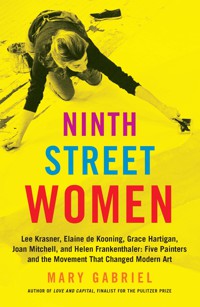
Ninth Street Women, by Mary Gabriel
Through riveting and braided profiles of Lee Krasner, Elaine de Kooning, Grace Hartigan, Joan Mitchell, and Helen Frankenthaler, Gabriel illustrates in this groundbreaking group biography how New York City supplanted Paris as the modern art capital of the world in the 1940s and ’50s. In doing so, Gabriel canonizes the women of abstract expressionism, one of the most significant visual movements of mid-century America. Its (mostly male) practitioners came from a generation that was marked by the Great Depression and war, and the style they chose was a form of resistance and rebirth. For “AbEx” women, painting was additionally about living life differently while rejecting misogynistic ideals and pressures. Readers will empathize with their struggle to exist as talented artists, especially when their abusive relationships restrained their full creative potential. Gabriel’s portrait of a few blocks around Washington Square Park, a “critically important stretch of pavement,” recontextualizes these women’s formidable vision and reaffirms that their legacy remains central to contemporary art.
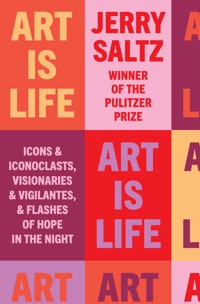
Art Is Life, by Jerry Saltz
Art literally changed Saltz’s life: Once a self-described “failed artist” turned truck driver, he made his passion into a career as an influential critic at The Village Voice and New York Magazine. The author shares that ardor with his readers through a selection of wide-ranging writing from the past 20 years. He looks at the various crises and New York City’s art scene—the aftermath of 9/11, the 2008 financial crisis, the coronavirus pandemic—and depicts an ebullient yet fragile world undergoing perpetual reinvention. He writes formidable portraits of people such as Beauford Delaney and describes the jaw-dropping splendor of Paleolithic cave paintings in Niaux, France. He worships artwork while denouncing the excesses of its business, taking pleasure in ridiculing the frequently obscene industry’s theatrical auctions and overinflated cycle of openings, biennials, and fairs. But animating this lucrative, commercial global machine, Saltz underscores, is the pricelessness of the artist’s vision—without which life would be quite dull.
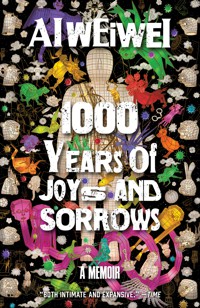
1,000 Years of Joys and Sorrows, by Ai Weiwei (translated by Allan H. Barr)
Ai’s long-awaited memoir is a love letter to his poet father, Ai Qing, and his son, Ai Lao, as well as a guide to what motivates protest art. Ai revisits, in words and personal illustrations, his alienating childhood, his coming-of-age as a citizen-artist, and his eventual decision to flee China. He recounts how his father, once courted by Communist cadres (and by Mao personally), was disgraced, and how his repudiation by the authorities extended to his entire family: Ai spent significant time in harsh labor camps and reeducation facilities during the Cultural Revolution. From there, the book largely follows the course of China’s contemporary history, which underscores the indivisibility of Ai’s politics and his art. The narrative is briefly interrupted by his stay in the United States in the 1980s, where he lived in precarious conditions doing odd jobs, including sketching people’s portraits in the streets of New York City, before returning to China shortly after the Tiananmen massacre. Then Ai’s dissidence against state-sanctioned abuse ignited more harassment and detention; he now lives in exile with his family. Ai’s pioneering use of blogging and viral reach demonstrate new ways for art to exist in the digital age. His book illustrates the power of shocking, satirical, and insolent work as an instrument to resist oppression and authoritarianism.
When you buy a book using a link on this page, we receive a commission. Thank you for supporting The Atlantic.







